
A giant Christmas tree, a skating rink, and a whole city of glass fairy castles.

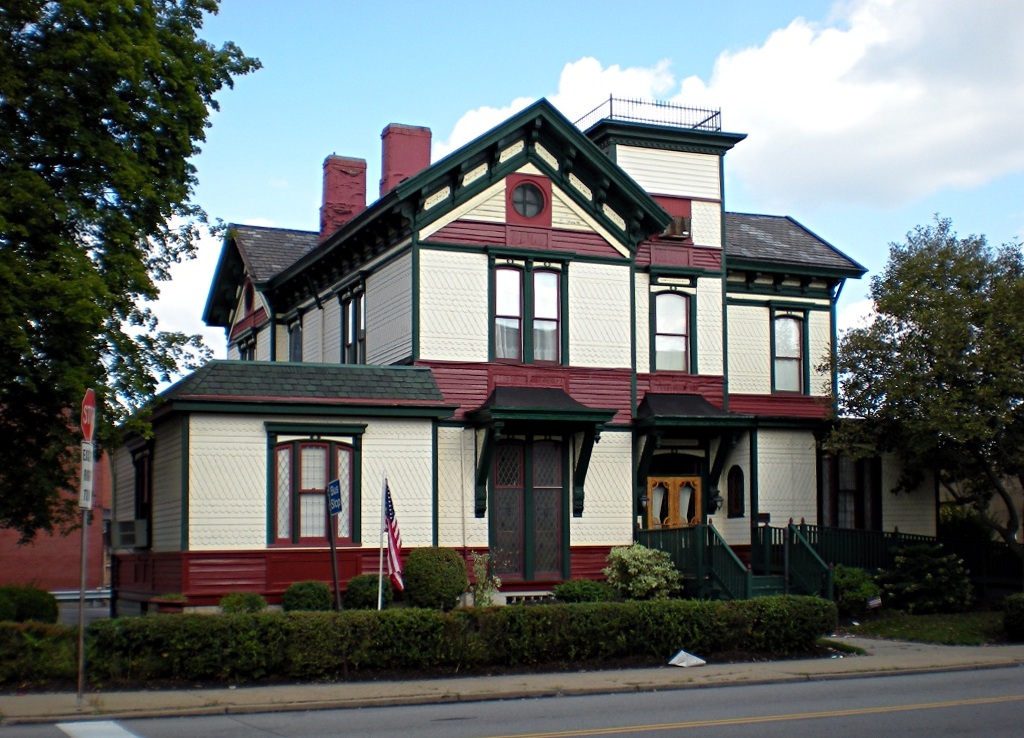
A rare “Stick Style” Victorian, this was the home of Mr. J. P. Ober of Eberhardt & Ober. The style was common elsewhere in the country, but Pittsburgh preferred heavier, stonier styles in its domestic architecture. As commonly happens to an opulent house in a working-class neighborhood, this has become a funeral home.

Lawrenceville is one of Pittsburgh’s most interesting neighborhoods. In its long history—it was the birthplace of Stephen Foster—it has never really decayed, but it has seldom been a really fashionable neighborhood. The result is a collection of houses going back to the Federalist style, many of them in good condition, and relatively few bulldozed for new developments. Now, at last, the neighborhood is becoming fashionable, but among artists who cherish the history and architecture of the place.
This house probably dates to the 1880s, but the basic shape of Lawrenceville rowhouses has remained the same for most of the neighborhood’s history. The green trim and dark red paint were the typical look of a Pittsburgh house for many decades; by contrast, the identical house to the left has been restored and pseudo-Victorianized.
Today is Father Pitt’s second anniversary on the World-Wide Web, so he celebrates with a collection of some of the most remarkable sights in the city that bears his name.

The Mary Schenley Memorial Fountain in Oakland, with the Cathedral of Learning in the background.

A Romanesque lion guarding the Allegheny County Courthouse.
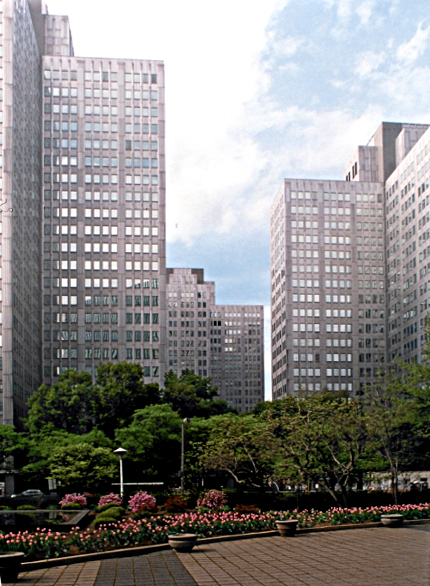
The modernist ideal at Gateway Center.

Sunset over Polish Hill.

Hebe among the orchids in the Sunken Garden at Phipps Conservatory.
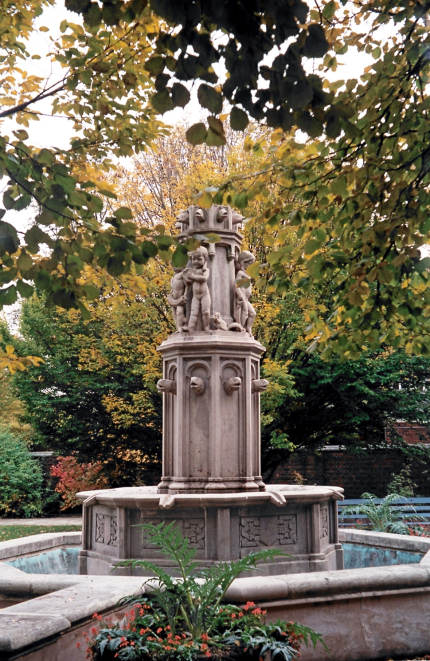
A whimsical fountain in Mellon Park.
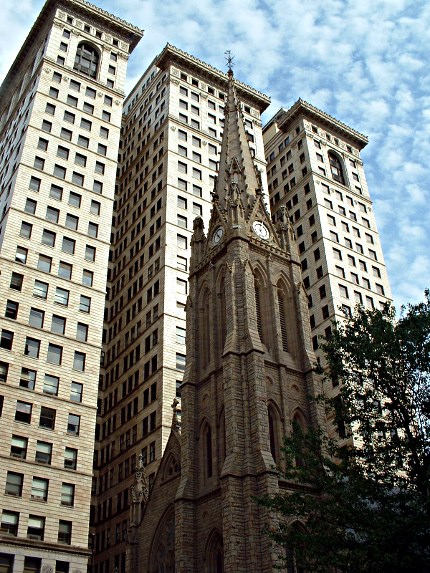
The spire of Trinity Cathedral, with Daniel Burnham’s Oliver Building in the background.
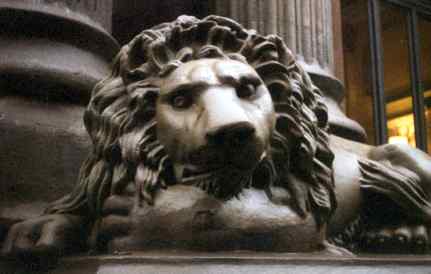
One of the famous Dollar Bank lions.

East Liberty Presbyterian Church, also known as the Mellon Fire Escape.

An octagonal Gothic mausoleum in the Allegheny Cemetery.
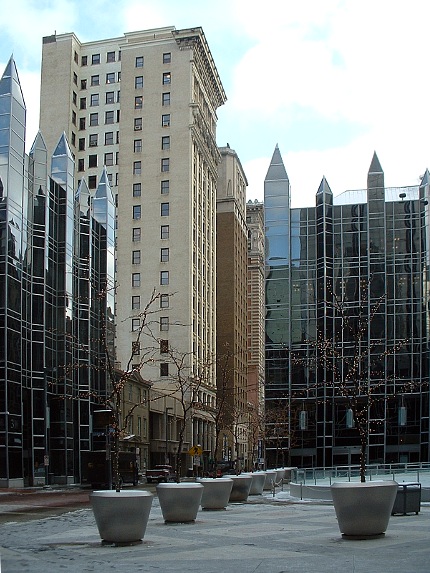
Some of the Fourth Avenue bank towers, with part of PPG Place in the foreground.
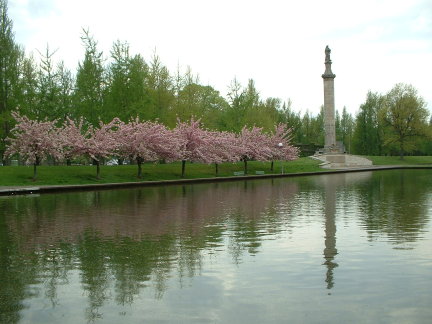
Lake Elizabeth, West Park, in the spring.
The mighty Argus C3 is the most legendary of all 35-mm rangefinders. Its standard lens was indifferent, it was heavy as all get out, it was needlessly complex—but it sold for three decades and made 35-mm film the standard in still photography.
Here are some pictures of the Victorian rowhouses in Manchester taken with one of old Pa Pitt’s C3s and the standard 50-mm Cintar lens.
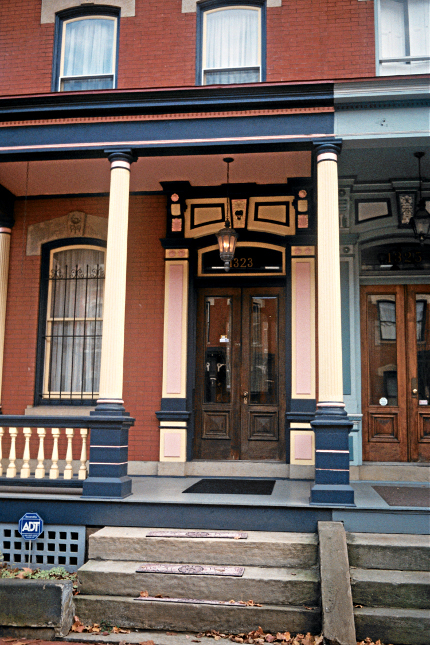


And here is the beast itself, affectionately known as the “Brick,” for reasons that probably don’t need much explaining. It also weighs about as much as a brick of comparable size. This camera has starred in more movies than Cary Grant, always playing the “professional” camera. It was the magazine photographer’s camera in The Philadelphia Story; it was the magical reporter’s camera in the Harry Potter series.
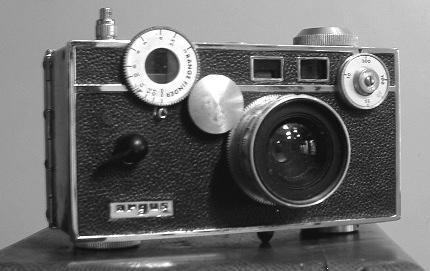
Now let us enumerate the many virtues of the C3. First, it looks really technical, which was a big selling point. It was much cheaper than the better European cameras of the same era, but it had all those gears and dials on the front, which made it look quite expensive and impressive. Its mechanism is simple and well-designed: if you pick up a C3 that hasn’t been used in forty years, there’s a better than even chance that it still works. The lens is interchangeable (by a process that would try the patience of Job, if Job had been a photographer), and fairly good German wide-angle and telephoto lenses were offered. It’s built like a tank; if you drop it, you’ll probably just pick it up, shrug, and go on shooting.
To take a picture, you first set the shutter speed on the shutter-speed dial, then the aperture on the lens. Then you look through the rangefinder window and find the distance, which—amazingly—also focuses the lens by means of the coupling gear on the front. (An astounding piece of automation!) Then you move your eye to the viewfinder and compose the picture. Then you cock the shutter with the lever on the front. Then you push the shutter button and take the picture. Then you push the film release to the side and wind the film to the next frame. All this does not quite happen in the blink of an eye, but you can get pretty good at it after some practice.

Christmas decorations are going up in the Allegheny County Courthouse. Father Pitt apologizes for distorted lines in these pictures, caused by the cheap lens on a cheap digital camera.

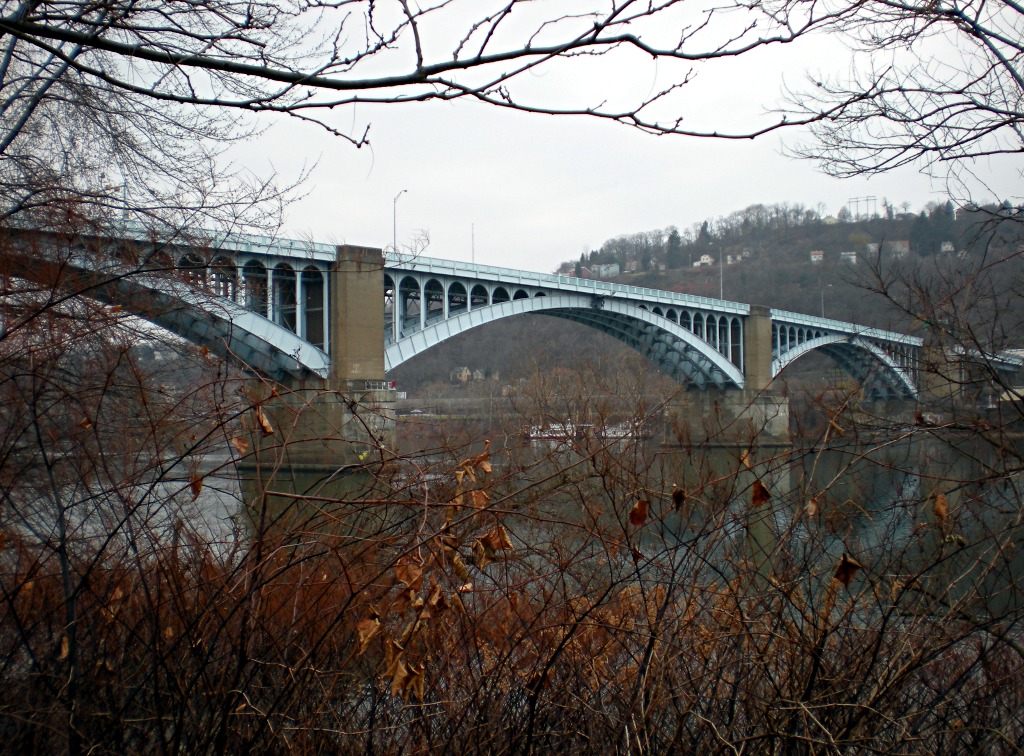
The Fortieth Street or Washington Crossing Bridge, seen through the last remnants of autumn color along the Allegheny.
This extraordinary row of identical Second Empire houses is one of Pittsburgh’s architectural prizes, and the neighborhood itself is an interesting case study in preservation. Although it lost its business district to a horribly misconceived urban-renewal project that replaced urban shops with suburban ranch houses, Manchester has kept most of its opulent Victorian rowhouses, many of which were restored with money provided by billionaire news magnate Richard Mellon Scaife. The restoration was accomplished without displacing the lower-income residents of the neighborhood, so Manchester is one of the few historic districts in the country that have been restored without being yuppified.
The picture was taken with a Kiev-4A camera.

The Union Dale Cemetery was to the city of Allegheny what the Allegheny Cemetery was to the city of Pittsburgh: the place where the rich and prominent went to their final rest, taking as much of their wealth with them as possible. It occupies an even more precipitous hillside from which, through the trees, we can catch occasional glimpses of the skyline of downtown Pittsburgh. These pictures were taken with a Kiev-4A camera.


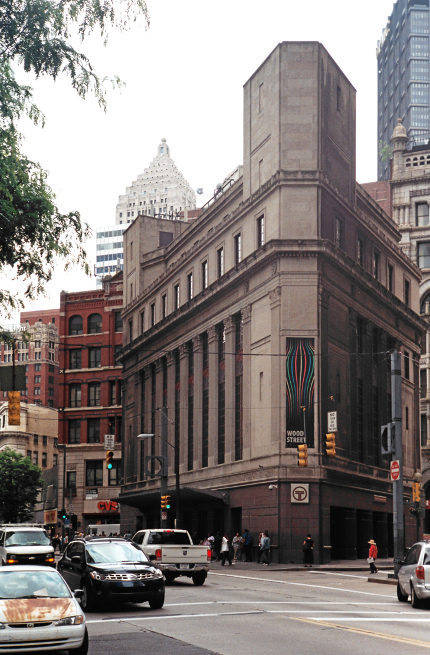
Two colliding grids make up downtown Pittsburgh’s street layout, and the collision happens at Liberty Avenue, giving us a fine array of odd-shaped buildings. This triangular structure, built as a bank, now houses the Wood Street subway station below and the Wood Street Galleries, an important contemporary art gallery, on the upper floors.
While the Gateway Center Station is closed, Wood Street is the terminus of the subway downtown.
This picture was taken with a Kiev-4 camera, a Ukrainian rangefinder that Father Pitt loves with an unreasoning passion. He would like to state for the record that the hideously rusted car in the foreground is not his fault.